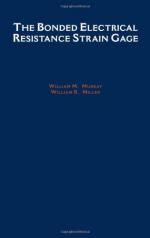|
This section contains 1,595 words (approx. 6 pages at 300 words per page) |

|
Investigating the Resistance of a Wire
In this experiment I will be investigating how the resistance of a wire is related to it's length.
Background Knowledge
The scientific explanation for resistance in a wire, is due to the composition of the atoms found in metal conductors. When an electron (from current) passes through a wire, it will hit these atoms which make up the structure of the metal. This in effect, restricts the movement of the current through the wire and so obviously if a wire were to be longer, there would be more atoms colliding with electrons which would ultimately mean a higher resistance.
Ohms law states that V = IR, I = V/R and R = V/I (where V = Voltage (potential difference) measured in volts, I = Current (measured in Amps), and R = Resistance measure in Ohms (Ù).
Apparatus
24 SWG Constantin Wire (100cm), power supply, wire cutters, ammeter, voltmeter, metre rule, cello-tape, firemat, crocodile...
|
This section contains 1,595 words (approx. 6 pages at 300 words per page) |

|


